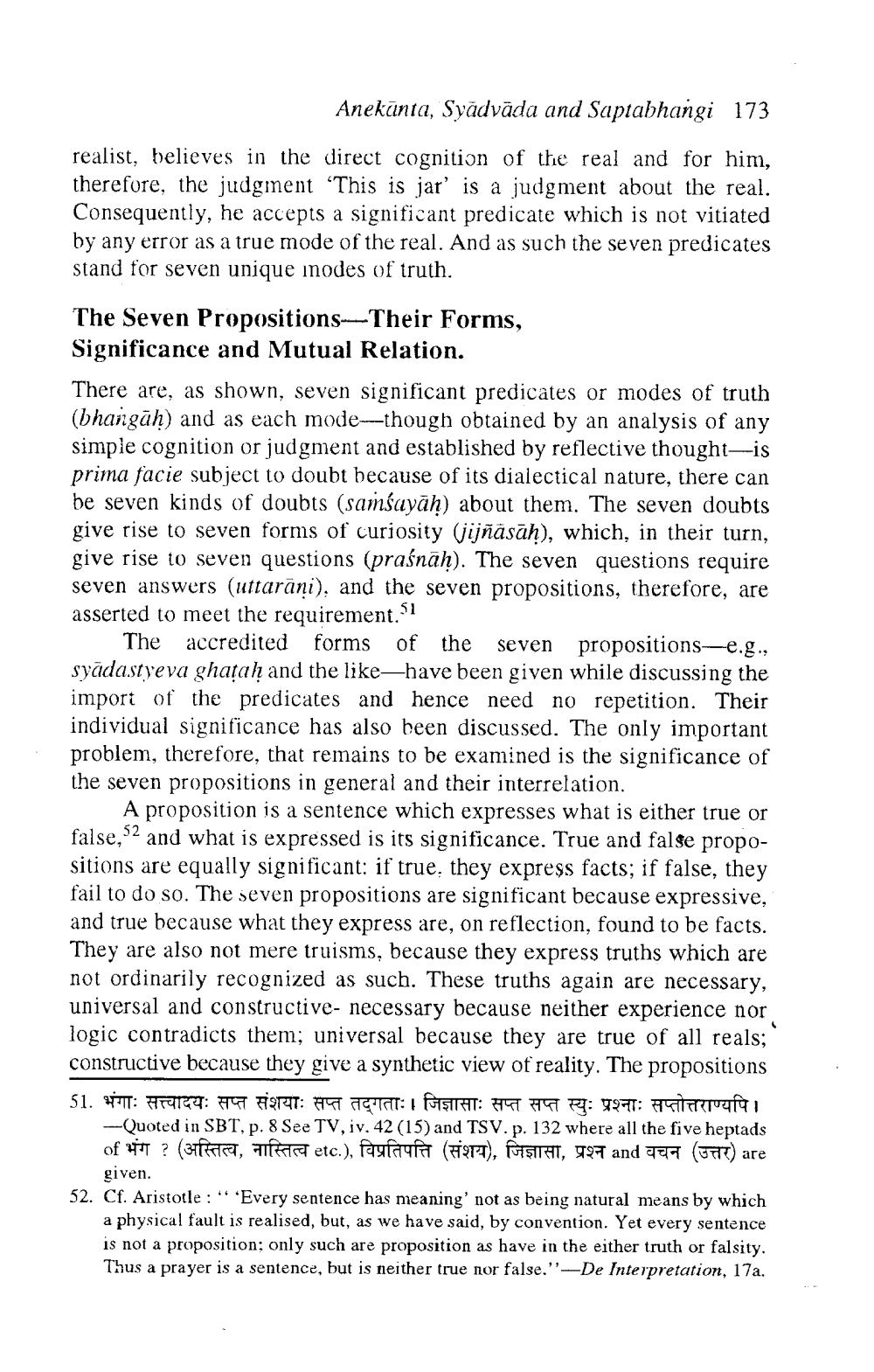________________
Anekunta, Syādvāda and Saptabhangi 173
realist, believes in the direct cognition of the real and for him, therefore, the judgment “This is jar' is a judgment about the real. Consequently, he accepts a significant predicate which is not vitiated by any error as a true mode of the real. And as such the seven predicates stand for seven unique inodes of truth.
The Seven Propositions-Their Forms, Significance and Mutual Relation. There are, as shown, seven significant predicates or modes of truth (bhangāh) and as each mode--though obtained by an analysis of any simple cognition or judgment and established by reflective thought-is prima facie subject to doubt because of its dialectical nature, there can be seven kinds of doubts (samśayāh) about them. The seven doubts give rise to seven forms of curiosity (jijñāsāh), which, in their turn, give rise to seven questions (praśnah). The seven questions require seven answers (uttarani), and the seven propositions, therefore, are asserted to meet the requirement. 1
The accredited forms of the seven propositions-e.g., syādastyeva ghatah and the like—have been given while discussing the import of the predicates and hence need no repetition. Their individual significance has also been discussed. The only important problem, therefore, that remains to be examined is the significance of the seven propositions in general and their interrelation.
A proposition is a sentence which expresses what is either true or false, 52 and what is expressed is its significance. True and false propositions are equally significant: if true. they express facts; if false, they fail to do so. The seven propositions are significant because expressive, and true because what they express are, on reflection, found to be facts. They are also not mere truisms, because they express truths which are not ordinarily recognized as such. These truths again are necessary, universal and constructive- necessary because neither experience nor logic contradicts them; universal because they are true of all reals; constructive because they give a synthetic view of reality. The propositions 51. WIT: TOTEUT: 777 ESTET: 197 CAT: FEHT: 167 T: 0977: Hirmuafai
-Quoted in SBT, p. 8 See TV, iv. 42 (15) and TSV. p. 132 where all the five heptads of 4T ? (TTTET, TIIT etc.),
f ifa (TT), STAT, 997 and a (TTTT) are given. 52. Cf. Aristotle : "* Every sentence has meaning' not as being natural means by which
a physical fault is realised, but, as we have said, by convention. Yet every sentence is not a proposition; only such are proposition as have in the either truth or falsity. Thus a prayer is a sentence, but is neither true nor false."'--De Interpretation, 17a.




